Bring to Class: Assignment 9 & 10 | Sketchbook 9 &10
WARM UP: Morning Still Life of cubes, until 8:30 am
SKETCHBOOK 9 + 10 CRIT: Armature in Action & Line of Action
Round 1:
- Lay your sketchbook on a table, opening it to an ARMATURE IN ACTION sketch.
- Then, go to the blackboard and write the name of the action you drew.
- Before critiquing each sketch, guess which action is being illustrated.
Round 2:
- Lay your sketchbook on a table, opening it to a LINE OF ACTION sketch.
- Then, go to the blackboard and write the name of the action/type of pose you drew.
- Before critiquing each sketch, guess which action is being illustrated.
ASSIGNMENT 9 + 10 CRIT: Nobody Puts Baby in the Corner & Power Poses
Hang your drawings side by side so they can be critiqued simultaneously.
Video: Perspective Drawing – Play this video at 1.5 speed
Discuss: One-Point Perspective
Vocabulary:
Horizon Line:
The viewer’s eye level or where the sky meets the water or land.
When inside, it could be where the wall meets the floor.
Vanishing Point:
The place where something moves so far away from your view that it just vanishes. If it is a road, with parallel lines, it is finally where they vanish creating the illusion of them intersecting.
ACTIVITY: If time, start sketchbook homework.
DUE NEXT WEEK:
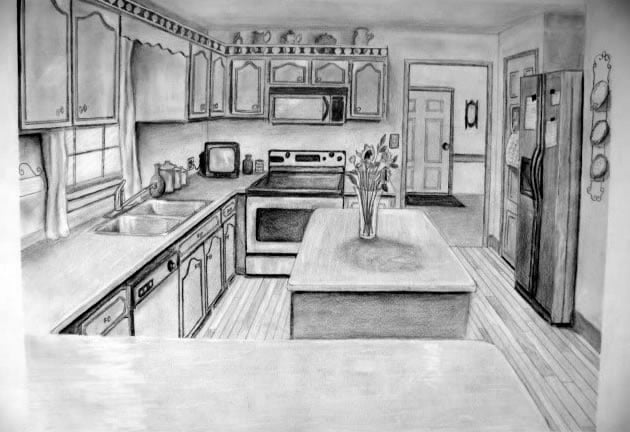


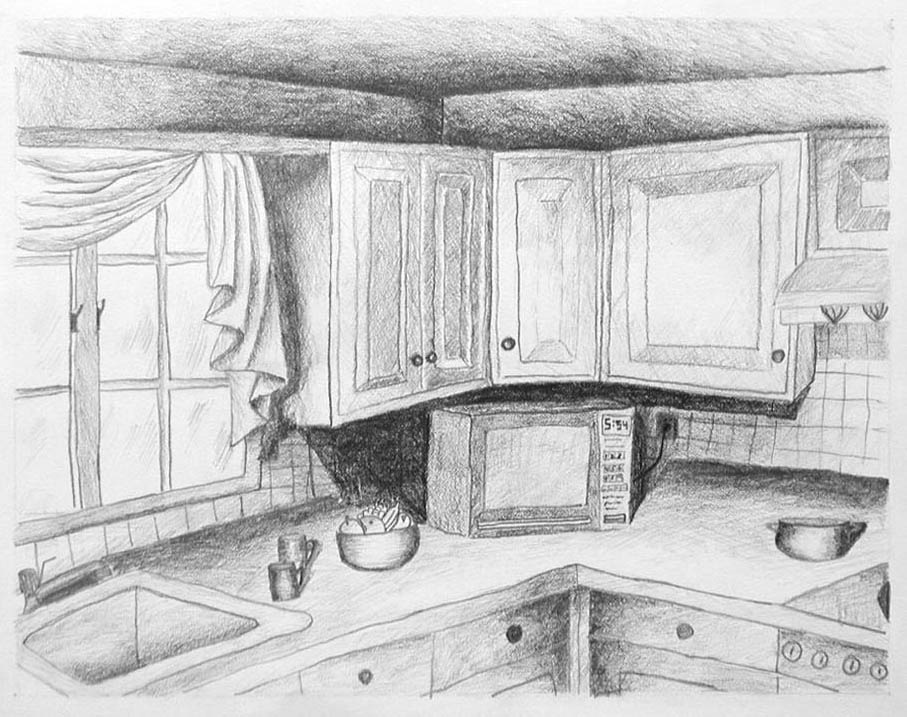

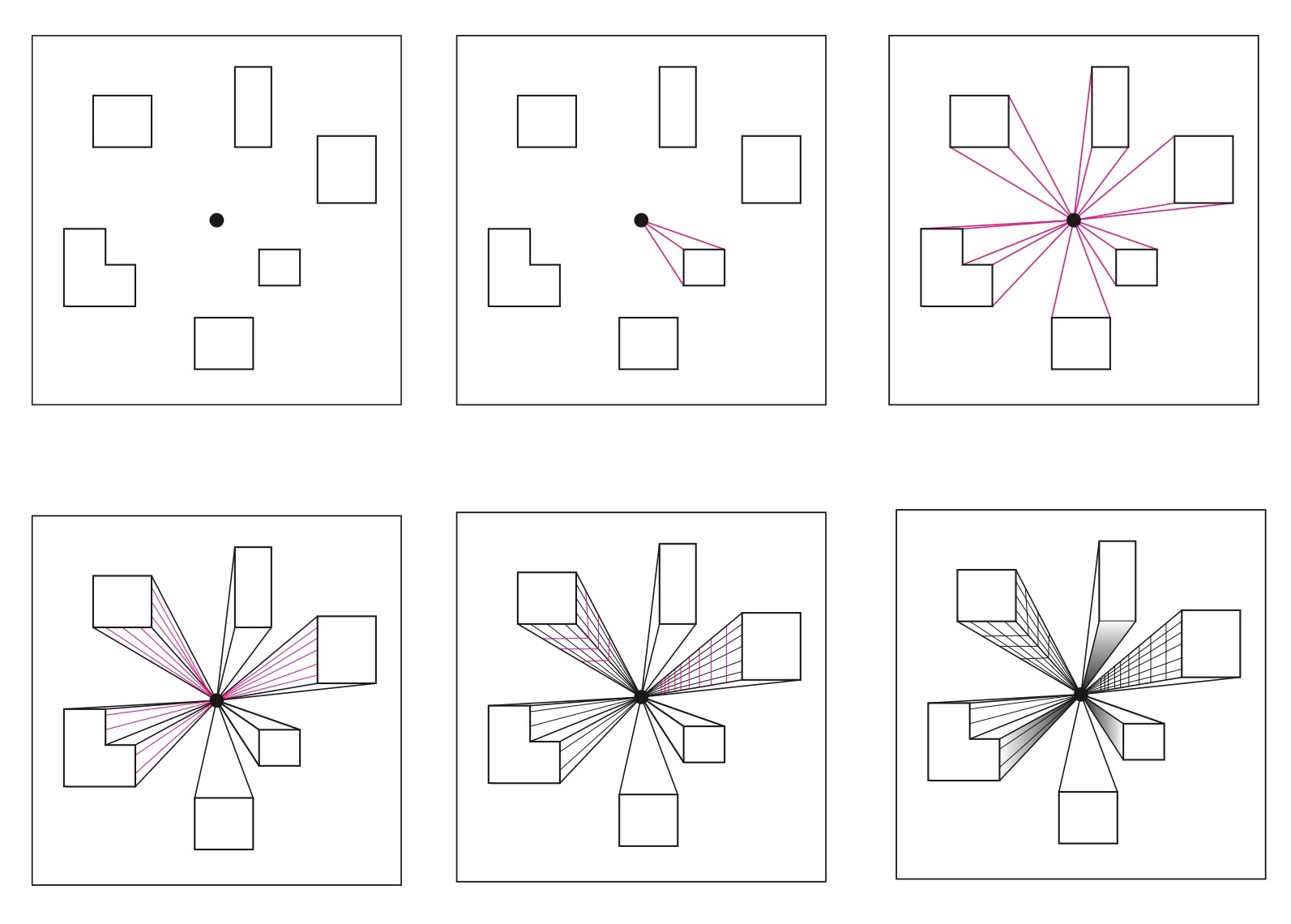
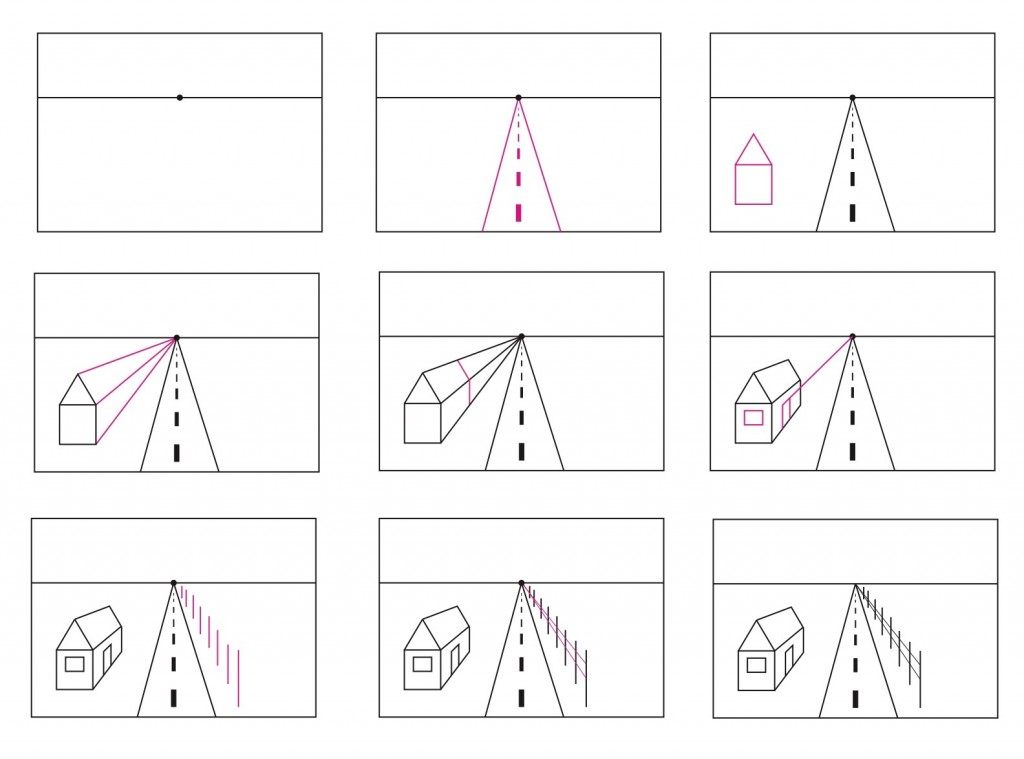
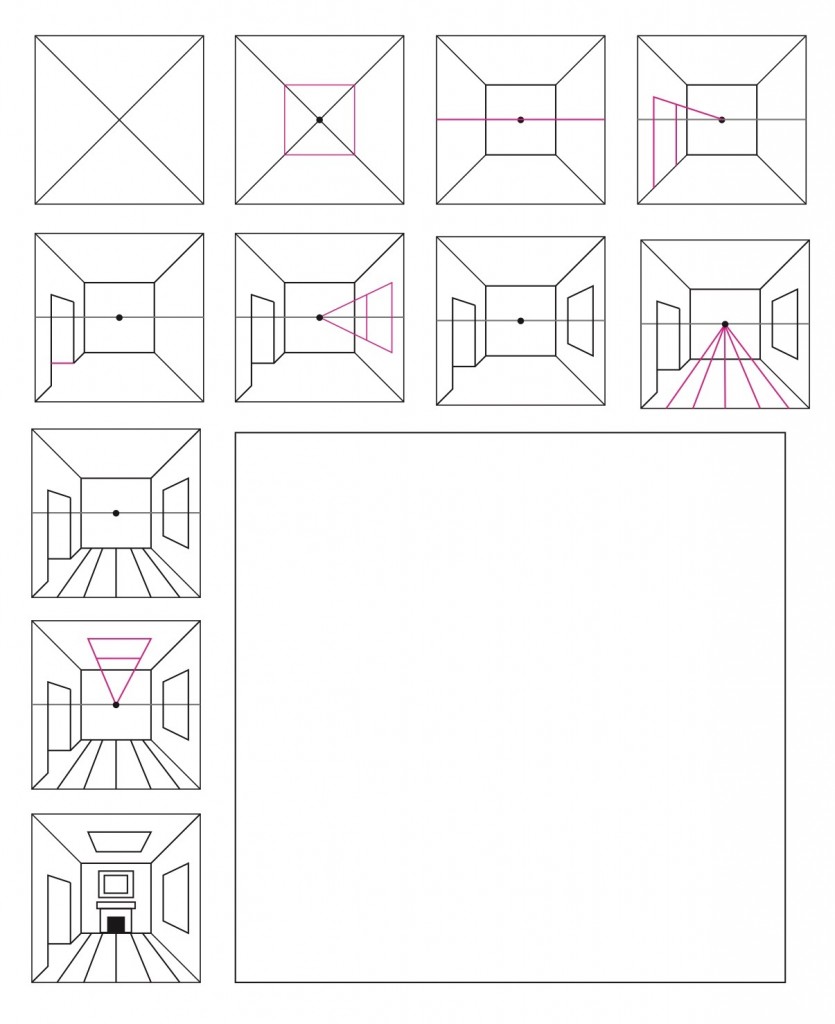













Recent Comments